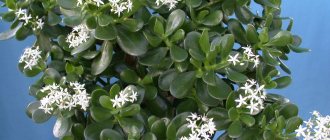- September 9, 2018
- Trees and shrubs
- Rezeda Zaripova
Many have seen a fairly large tree growing near ponds and rivers in areas with a temperate climate. This plant thrives in the wild and tolerates frost and heat well. This is a weeping willow - a tree that is easy to grow at home due to the plant's low maintenance requirements. It looks great in recreation areas, parks and even in the local area.
general information
Willows are deciduous shrubs and trees. Their varieties may differ from each other in some external characteristics. In total, there are approximately 600 species in the Willow genus.
Willow is one of those plants that is familiar to many. Most people know it under such names as willow, willow, vine, willow. Most often it is found in central Russia. Favorite habitats are wet areas.
On fertile, moist soils, in well-lit areas, the tree grows quite quickly. Among them, there are certain varieties that feel great in swamps. Shrubs can sometimes be found even in forests in which they act as a mixture of different types of trees.
General description of the tree
Weeping willow is a fairly large plant, reaching a height of 15 meters, has a straight, even trunk and a wide pyramidal crown. Its young thin shoots are yellowish-olive in color. At first they are slightly pubescent, then become naked, acquiring a brownish color. The leaves are narrow-lanceolate, long, pointed in shape.
Features of willow - the crown is see-through and transparent, the shoots are thin and flexible with narrow, elongated and pointed leaves. Most of the trees are quite tall (up to 15 meters), but there are also 40-meter trees and even dwarf trees. The plant can live up to 100 years.
In landscape design, weeping willow is an original and interesting solution. Among the cultivated plants you can find trees with powerful trunks and ornamental shrubs. The difference between varieties is associated with adaptation to life in a variety of climatic conditions.
The following is a brief description of some varieties of weeping willow: photos, descriptions.
Plant species
Willow is unpretentious and easy to care for; there is a wide choice of varieties - from trees with a powerful trunk to ornamental shrubs. It fits well into any landscape design and does not lose its attractiveness several years after planting. Varieties of garden species differ from each other not only in their decorative forms, but also in their ability to grow in different climatic and natural zones.
White willow can reach a height of about 25 meters and its lifespan is 100 years. On a large trunk, side branches hang down; the leaves are colored light gray. White willow blooms in mid-April. She feels comfortable near rivers and ponds, and can be planted on the shore of a decorative pond. Weeping white willow grows small. It has rich yellowish bark, light green foliage, long branches descending low to the ground. Fits well into the floral landscape of garden decor - small flower beds, alpine slides. The Babylonian willow variety has a weeping crown, is quite voluminous, grows to a height of about 15 m, and has a life expectancy of 100 years. Grows quickly, prefers moist soil. The foliage is light, without a gray tint. Shaggy dwarf willow reaches a height of 2 meters, is frost-resistant, prefers moist and nutritious soil. The leaves are round in shape and silver in color. This variety is resistant to severe frosts and also loves moist and nutritious soil. Strong, upward-growing shoots allow you to independently form an unusual crown shape. Goat willow grows up to 10 meters in height, the foliage is dense and large in size. This species often graces parks and recreation areas. The flowering season begins in March, at which time the willow spreads a delicate aroma of honey. Purple willow is a small 1-2 meter shrub with thin, reddish shoots. It has wide, gray-green foliage. Earrings are inflorescences often purple or red. Collectors have also bred other varieties of willow. They may differ not only in size, but also in color and leaf shape. With proper care, the plant grows quickly, and by pruning it can be given the desired shape.
Goat willow
This is a large, fast-growing tree (height up to 12 meters, width up to 6) with a rounded crown and short trunk. Vertical branches have side shoots that are raised up and spread out. The leaves of goat willow are slightly pubescent, rounded or wide elliptical, colored green above and gray below.
The flowers, which have a honey aroma, have a yellow-silver tint. Goat willow becomes brittle with age (after 20 years). This variety of weeping willow (see photo in the article above) grows naturally in Central Asia and Europe. Reproduction usually occurs by seeds, and decorative forms by grafting.
Willow brittle
The tree, which grows quite quickly, reaches a height of up to 15 meters and a width of up to 8 meters. Sometimes brittle willow has two trunks, acquiring a curved shape. Its crown is asymmetrical and openwork. The long leaves are elongated, lanceolate. They are green on the upper side and bluish on the lower side. In autumn, the leaves take on a greenish-yellow hue.
The green-yellow flowers of this variety of weeping willow (photo below) bloom in May. Brittle willow shoots are yellow or brownish, brittle and glossy, and easily rooted. The plant is quite winter-hardy. Under natural conditions, willow grows in areas from Europe to Asia.
Brittle willow has a spherical shape in a variety called Bullata. The width of its crown reaches 15 meters, the height is 20. It is thick and has a beautiful even shape. The bare shoots are olive-green in color, the dark green elongated leaves are located mainly in the upper part of the crown, making the tree look quite original and attractive. This plant form is widely used to decorate hedges and to create beautiful compositions with large and tall ornamental trees. Willow is resistant to winds and frosts and is easy to care for.
Botanical features
Willow belongs to the shrubs and has more than 300 species. Some of them are successfully grown by gardeners on their plots. The plant has beneficial properties and is used in medicine, cosmetology, and various crafts. Thanks to its grace and extraordinary appearance, the tree has earned many poetic descriptions in literature and songs.
A unique feature of the weeping willow is its beautiful crown , which appears translucent from a distance. The branches are drooping, falling down vertically - this is what a talnik tree looks like. The flowers are collected in inflorescences called catkins. Most species reach a height of 15 m, but there are also dwarf species that grow no higher than 2-3 m. In nature, giant willow specimens up to 40 m high are found.
In landscape design, shrubs are planted alone and together with other plants. Willow is not placed in groups, as it requires a lot of space. Dwarf varieties look great on alpine hills, and medium ones are planted along the site, forming a hedge. Mature plants are tolerant of pruning and can be used to create interesting shaped compositions.
If there is an artificial pond on the site, the willow will take its rightful place there, framing a stream or pond with its branches. In conditions of high humidity, the tree feels great, and at the same time creates a pleasant shade under which garden owners can relax. Shrubs are often planted on slopes to prevent further shedding. Willow has a powerful and branched root system, which prevents the soil from crumbling.
Iwa Matsuda
The plant, widespread in China and Korea, grows up to 13 meters in height. The crown is wide-pyramidal, the trunk is even. Young thin shoots are straight, pubescent, yellow-olive in color. They then become hairless and brown. Matsuda's leaves are long, pointed and narrowly lanceolate. The plant is light-loving and prefers moist soils. It grows quickly and is propagated by woody cuttings.
This variety of weeping willow has a decorative form with beautiful green shoots. It grows in the form of a small shrub with curved serpentine shoots. This plant has a rather beautiful openwork crown, which can perfectly decorate any park area or garden plot. It is found naturally in Korea and China.
Disease and pest control
Weeping willow is resistant to most diseases. With excessively high humidity and excessive watering, it can become affected by scab and rot. Rot usually goes away without treatment, and pesticides or copper-containing preparations should be used against scab.
The disease can be recognized by the spots that appear on shoots and leaves at the very beginning of spring. A favorable condition for the development of scab is damp air and soil. If the tree is not treated, the leaves and branches begin to die. The disease spreads quickly, and after a while the older shoots turn black and dry out. In this case, the diseased parts of the bush acquire a grayish color.
Harmful insects do not appear on weeping willow very often, but if they are detected, the gardener should take action. There are many species capable of choosing shrubs, but only a few can live in the conditions of a personal plot. The most common causes of harm are:
- Spider mite. Individuals settle on the underside of the leaf. They are difficult to notice while their numbers are small. Pests suck the juice from the leaves, causing them to turn brown and fall off. The mite overwinters under bark and in fallen leaves, so prevention is effective in combating it. Plant debris should be removed in the fall, not in the spring, and then the trunk and shoots should be inspected to find places where parasites have taken refuge.
- Silkworm. The caterpillars eat young shoots and at the same time weave threads from which they roll up a cocoon. They can be identified by these nests. If silkworm pupae appear on the bush, it must be urgently sprayed with a chemical against garden pests, for example, Aktara.
- Volnyanka. Before turning into a butterfly, the caterpillars suck the sap from the tree. In small numbers they do not cause much harm, but it is better to destroy them as soon as a few individuals appear.
- Willow aphid. Sucks sap from young branches and leaves. It reproduces quite quickly, colonizing nearby plants. It damages not only willow, but also fruit trees and berry fields.
- Rodents. Mostly mice and hares. In winter, they eat the bark and damage the roots. Protection methods are mechanical.
Caring for the health of willow should be year-round. From spring to the end of winter, you need to carry out all the necessary measures, then the tree will be strong, lush and healthy.
creeping willow
Nurseries grow the weeping variety “Armando” in the form of a trunk. In spring, the fluffy inflorescences of this variety are silvery-pink woolly scales that look great. Then, when yellow anthers have already formed, the willow becomes different. A peculiarity in the care of this plant is that after flowering the bush must be heavily pruned in order for young shoots to appear.
The leaves of "Armando" are green, shiny, gray-green on the underside, but sometimes have a blue tint. Round, small, few yellow inflorescences appear on the bush before the leaves bloom. This variety of weeping willow (photo presented in the article) is suitable for growing both in the garden and on the balcony in a container.
In the standard form there is a creeping form of Argentea. This is a miniature, very beautiful weeping tree.
Varieties common in Russia
When talking about willow, the adjective “weeping” is often added, and many people think that this is a separate variety of plant. In fact, this is a common characteristic of several varieties with a characteristic cascading crown. Many varieties of weeping willow are found in Russia.
A classic weeping variety , its elongated silver leaves combined with long flexible branches create a spectacular lush crown that flows like a tent. The crown diameter can reach 20 meters for an adult plant. The undoubted advantages of this variety include its unpretentiousness to soil and climate . Although white willow can grow even in soil with excess moisture, harsh winters with sudden temperature changes will not destroy it.
However, in the warm season, the tree requires a lot of light and heat - then the growth of the tree will be uniform, approximately 3 meters in five years. The maximum height of a willow tree of this variety is about 25 meters, and the trunk width is corresponding.
Flowering begins in the middle or end of spring, the flowers have a yellow-green color, collected in tassels up to five centimeters. A common popular name for willow flowers is cats, for the fluffiness and tenderness of the inflorescences.
Babylonian
Another recognizable and popular variety of weeping willow. from the previous one in a more elegant appearance . A mature tree reaches a height of about 12 meters, the crown spreads out in a similar diameter, and looks very delicate and elegant due to the thin flexible shoots flowing down. The color of the leaves themselves can be green with a golden tint or reddish. This tree can often be found in city parks, near water bodies.
Babylonian willow has several more subspecies, which are quite different from each other in appearance, but they all require a lot of sunlight and abundant watering.
We can safely say about this variety that it belongs to the decorative variety - since this tree adds less in height than in the girth of the lush head of foliage. The leaves come in various shapes, their color ranges from rich green to a grayish tint.
The main care for this variety consists of timely and proper watering . In the wild, goat willow is found on the edges of the forest, near roads and in ravines, that is, it does not need excessive watering and moisturizing, but it definitely loves water.
In order for the tree to delight with its beauty, fertilizer will also be useful. The complex option is suitable for feeding in spring and autumn - twice a season will be enough.
To ensure that the tree does not lose its aesthetic appeal, it is imperative to prune it .
An adult tree is pruned after the flowering period is over. Active growth will ensure that all shoots are cut to a third or two-thirds of their length.
Alpine
Another variety very loved by landscape designers. The plant can hardly be called dwarf, but its maximum height is 150-180 cm. A characteristic feature of the alpine willow is its early flowering - the flowers appear earlier than the leaves and have a very interesting color. Depending on the subspecies of the shrub, catkins on male trees can be orange, black, silver and even red.
Like all trees of the willow genus, the variety loves moisture and abundant watering , as well as a lot of sunlight. The decorative appearance requires mandatory pruning immediately after flowering has finished, and this happens in April.
In addition to the fact that the alpine variety is used in landscape design (including in alpine slides), it also takes root well in containers, decorating terraces and home “winter” gardens.
Entireleaf
One of the most beautiful varieties of ornamental willow - valued for its variegated foliage and crown, which forms very quickly. In demand both among gardeners and landscape designers.
Young shoots have a soft green tint, and mature leaves have an original color interspersed with white and pink. Under the scorching rays of the sun, variegated leaves may lose their brightness.
With proper and timely pruning, the crown will form at a slight distance from the ground, and will be about one and a half meters high. The crown of the plant is usually about a meter in diameter, but rarely exceeds one and a half meters.
Like all its fellows, the whole-leaved willow blooms, but only three years after thorough rooting . This low-growing species prefers open sunny places, but also grows quite well in partial shade, where the sun's rays are scattered and warm the plant during part of the daylight hours.
Holly
The official name of the Easter willow , whose thin branches are dotted with touching fluffy lumps, sounds exactly like this. There are at least three more accompanying names, but even without them, the willow is recognizable and loved by many since childhood, precisely because of this association with the bright holiday of the Resurrection of Christ.
Geographically, this plant is found everywhere, since it is perhaps the most unpretentious of the entire willow species. Sometimes willow is specially planted along river banks. In this way, the bank is strengthened, and siltation of the river is completely reduced to zero. It is worth noting separately that the plant is an excellent honey plant, and since it is one of the first honey plants to bloom, it serves as a good food source for bees. And beekeepers actively take advantage of this.
Shaggy or woolly
This shrub species differs from its fellows primarily in its frost resistance . Woolly willow grows successfully in the northern regions of Russia, Siberia, as well as in Scotland and Scandinavia.
Related article: Wenge description and features
Tundra and forest-tundra as a habitat make plants creeping and stunted, and willow is no exception. It got its name, which speaks for itself, thanks to its shaggy, even slightly felt-like branches. At the same time, the leaves of the variety are dull, inexpressive in color.
The branches, in addition to their “increased shaggyness,” are also characterized by knotty and thickness.
This unpretentious, but in its own way spectacular variety is used to form a hedge, or rather, its lower part, since the shaggy willow rarely exceeds 1 meter in height and, unlike other types of willow, does not tolerate excess moisture in the soil and piercing cold winds.
Purple willow
In nature, it can be found in Central Europe and Central Asia. This type of weeping willow tree is large, growing up to 10 meters in height. The shape of purple willow can be different - dome-shaped, funnel-shaped, umbrella-shaped. Densely growing shoots take root easily. The narrow-lanceolate leaves are green above and bluish at the bottom. In autumn they turn yellow.
The reddish and slightly curved flowers have a pleasant aroma. Then, as the plant grows, they turn yellow. The root system is quite deep. Purple willow is winter-hardy and tolerates pruning well.
Types of weeping willow, their characteristics and rules for caring for the plant
The weeping willow is a large tree that can often be found near rivers and ponds in temperate climates. Judging by the fact that the plant feels great in the wild and tolerates heat and frost, caring for it at home will not be difficult. Willow looks great in parks, recreation areas or even in the front yard.
The tree can grow up to 25 meters and live 100 years.
Weeping white willow
This large plant reaches a height of 25 meters and a width of 15. The bark of the powerful trunk has a gray tint. At first the crown has a narrow columnar shape, then it becomes spreading, wide and rounded. The main shoots are raised upward, and the side shoots hang down a little. When blooming, the leaves of this willow have a silver-gray tint, then they become gray-green.
The plant's yellow flowers, which have a pleasant aroma, bloom at the end of April. White willow grows well in partial shade. In nature, it is found throughout Europe. The plant is winter-hardy.
This variety of weeping willow (photo can be seen in the article) has a Pendula form, distinguished not only by its beautiful crown, but also by its shoots, which have an unusual bark color: red-brown in summer, yellow in spring. And its light green leaves are quite decorative - pointed and narrow.
Willow care
The degree of care depends on the type of willow, planting location and climate. But basically it comes down to two actions:
- Watering. If the summer is dry, do not spare water to water the willow tree. We water ours every season, even if it’s not very hot. Sometimes we use buckets, and sometimes we just throw a hose under it for a while. And it feels great! Even in nature, willows grow best along rivers and reservoirs. They are not afraid of small floods in the spring. It’s a pity that the summer photos of our willow were not preserved...
- Trimming This applies only to decorative low-growing willows. Trimming gives these trees a special flavor. And if you don’t cut it, then why plant decorative varieties? So don’t be lazy to shape the crown. The branches are thin, there won't be any problems with pruning.
But I like regular willows better. They are also very different. That's what we'll talk about next.
Hairy willow
This is a low shrub (0.5-2 meters), attracting attention with its silvery leaves of an original shape in the form of an ellipse. They are covered with silky hairs. In addition, the shoots have a silvery fluff (a photo of the tree and leaves of the weeping willow can be seen below). Delicate yellow flowers during flowering look like original candles pointing upward.
The plant is frost-resistant and loves moist and fertile soil. Gardeners often use it to decorate a garden plot with a small artificial pond. This willow looks very impressive in various compositions, with its location in the lower tier.
Iwa Hakuro Nishiki
This willow is whole-leaved. The Hakuro-nishiki variety is a hemispherical shrub or small tree with branches hanging down. Thin flexible shoots are colored olive and purple-red. Young leaves are given extraordinary grace by beautiful pink and white spots. Old leaves lose this original color and become dark and monochromatic, with white veins remaining on some of them.
This plant is used to create group compositions in landscaping adjacent areas and park areas. A successful combination is the unusually beautiful foliage of willow with darker shrubs.
Babylonian willow
This type of weeping willow (there is a photo of it in the article) is an amazingly beautiful tree, which is a magnificent decoration of park areas in the southern part of Russia. Its homeland is the regions of China (Central and Northern). The tree grows no more than 15 meters in height. The large weeping crown reaches a width of up to 9 meters. It is formed by flexible, thin, shiny and bare branches of a yellow-green hue hanging down to the ground.
The leaves of the Babylonian willow are pointed and narrowly lanceolate, with finely serrated edges. Young foliage is slightly shiny, gray on the underside, and green on top. Flowering occurs after the leaves bloom.
It grows quite quickly. Looks impressive in any plantings near ponds and on lawns.
Willow whole leaf
This plant is found in Japan and in the south of Primorye. General description of the weeping willow tree of this variety: a spreading shrub three meters high, the trunk is curved at the base, the leaves are narrow and oblong.
Due to the soft green tone of the leaves and their arrangement (similar to the leaves of a fern), as well as thanks to the shoots (arranged in an arch and inclined to the sides), the willow takes on an unusually beautiful appearance. Flowering occurs in May with the release of a hyacinth aroma. The plant looks great in any group or single plantings near water bodies.
Application
Willow looks great in solitary and group plantings. Dwarf species of this shrub are often used to decorate rockeries and rock gardens. Most varieties withstand pruning well and are often used for making hedges .
Related article: Lemon aspen description and features
Most often, willows are found near bodies of water, where they look especially impressive thanks to the silver-green hue of the leaves, successfully complementing the surface of the water. The big advantage of these plants is their powerful root system, which allows them to be used to strengthen slopes and prevent soil erosion.
Holly willow (or pussy willow)
The plant can be a tree or a shrub. Weeping willow of this variety has an oval crown, reaching a height of up to 8 meters. Its shoots are flexible, purple-red in color with a bluish coating.
The foliage is long, linear-lanceolate, pointed. Green and shiny above, bluish below. This variety is one of the most unpretentious and undemanding to growing conditions.
Rosemary willow
This type of weeping willow is a semi-dwarf round shrub up to 2 m high and wide. Initially, the lateral shoots grow upward, then they become arched. This willow grows slowly. The leaves are green on top and white underneath. The fragrant yellow flowers bloom in April. Rosemary willow is frost- and wind-resistant.
The weeping willow tree (see photo in the article) of this variety is found in nature in Europe and Asia (Central and Middle).
Willow propagation
Under natural conditions, willow is propagated by seeds; in home growing conditions, seedlings and cuttings are used for this. The latter are harvested in autumn or spring. The middle parts of young shoots, no more than two years old, are suitable for them. After planting a weeping willow in open ground (in the spring after the snow has completely melted), caring for it is not difficult. Trees can also be planted in the fall, when the flow of sap stops. In the latter case, the soil should be covered with straw and leaves, and the tree with spruce branches.
Preparing cuttings for planting in the ground:
- cutting length – up to 30 cm;
- planting in the ground in any warm room or greenhouse;
- water the seedlings frequently, loosen the soil around them and apply fertilizer until they become stronger;
- young trees should not be planted in the first year; they should spend the first winter warm.
Useful properties and use in medicine
The plant is used to treat many diseases and for cosmetic purposes. Gardeners have no difficulty planting and caring for a weeping willow, and all parts of the bush can bring tangible benefits. Thus, willow bark is used for medicinal purposes. Diseases and disorders for which it helps:
- indigestion;
- tachycardia;
- low pressure;
- heat;
- joint pain due to rheumatism;
- stomatitis;
- ulcers in the mouth;
- profuse sweating;
- eczema.
If a person sweats a lot during a cold, it is useful to give him a tincture of willow bark to drink. For eczema, lubricate the affected areas with a decoction of the bark. Additionally, you can take tea from birch buds. In addition, a decoction of willow bark is used in folk medicine to treat gout, colds, and spleen diseases. The plant has a diuretic effect and helps stop bleeding from cuts and scratches.
For muscle fatigue, varicose veins, sore throat and leucorrhoea, it is useful to drink willow decoction 3 times a day. There are many recipes for preparing healing potions. The most popular of them:
- 1 tbsp. l. the bark is filled with 500 ml of water;
- put on fire, bring to a boil;
- simmer for 10 minutes;
- cool, filter;
- take 1 tbsp. l. morning, lunch and evening (before meals).
Hybrid of cherries and Duke cherries: varieties for the Moscow region
Other preparation methods can be found in the instructions for the pharmaceutical product.
Planting and care
The weeping willow is not capricious and is easy to care for. You should pay special attention only to the composition and moisture content of the soil. Under natural conditions, the plant grows on loamy and sandy loam soils, and regularly receives the required amount of moisture from the reservoir. If the willow has to be planted far from natural sources of water (rivers or ponds), it will need to be constantly watered. On hot, dry summer days, it is useful to spray the shoots with water.
Before planting the seedling, you need to dig a small hole (60 cm deep). During the planting process, it is worth adding fertilizer so that the plant takes root faster. The lower 1/3 of the hole should be filled with a mixture of peat, soil and humus, the rest of the volume is filled with earth. The soil should be raked towards the plant, forming a mound. Make a small hole around it for watering. Immediately after planting the plant, you need to water it with 2 buckets of water.
Tall and unstable seedlings require additional support. A peg is placed to which the young tree is secured with a rope.
Willow does not need any additional feeding. It adapts well to sudden changes in temperature and tolerates frost and drought well. However, periodic fertilization of the soil with compost and humus can be beneficial. The most comfortable conditions for willow growth are on moist soil. It grows faster in areas where the groundwater level is high.
Willow cultivation
The unpretentiousness of willow is known to everyone - this plant can take root in almost any soil. However, in light loamy soils, willow will feel much better than in sandstone and will delight you with its rapid growth.
An important point in choosing a place to plant a willow is the balance of light and shadow . Willow will not take root in full shade, but it will like partial shade and sunny open places. If in the area where the plant will be planted there is no open reservoir, near which it will be best, an area with groundwater will be suitable. Otherwise, the lack of natural sources of water will have to be compensated for by regular watering.
It is best to plant willow in early spring, before its first buds bloom. Another planting option is autumn, but after the natural movement of juices in the plant has been stopped. It is imperative to take into account that it is recommended to replant willow varieties that do not tolerate cold well in the spring, otherwise the plant will not take root before frost and will die. This can be prevented by mulching and covering the seedling.
- Pit for landing . The depth of the hole should be at least half a meter, and the width depends on the type of willow. For shrubs, a similar size is sufficient, but for tree species, at least 70 cm is needed.
- Drainage . It is especially required if planting is done in clayey rocks. The thickness of the drainage layer should be about 30 cm; crushed stone or sand are suitable as drainage.
- Mix peat, compost and soil in equal proportions, add 200 g. azofoski, mix thoroughly.
- Fill the hole one third with the prepared nutrient mixture and place the seedling in it. Fill with the rest of the soil, compact it and form a depression around the trunk.
- Pour two buckets of water under the seedling. If the plant is tall, it can be stabilized with a support stick.
Further care
- The seedling needs to be watered once a week , from two to five buckets of water per plant are required, and water must be poured not only on the ground, but also on the crown. Watering should be done early in the morning or after sunset. Young plants grow quite quickly, some varieties can add up to three meters per year, but the average increase is about half a meter to a meter.
- Two or three times a year you need to fertilize , the latter should be carried out no later than July. In the fall, it is imperative to remove fallen leaves from under the willow, since they contain tannins, and they can have a negative impact on the further growth of the willow.
- In the first three years, there is no need to prune the plant; the crown is formed. Its subsequent formation is carried out by pruning in the spring after the plant has flowered. Decorative varieties are pruned by 20 cm, this will allow the formation of a lush, beautiful crown.
Follow the rules of planting and care, and a healthy, beautiful tree will decorate your garden or summer cottage, as well as your yard and park.
Trimming
To achieve good results, it is important to periodically pay attention to the weeping willow. Care in terms of pruning the plant is also necessary. In order for willow bushes and trees to develop and grow well, they should not only be watered and fertilized in a timely manner, it is important to form them correctly.
Willow trees should grow freely for several years after planting in the ground. When the growth reaches one meter, you should begin pruning the plant. After flowering, you need to shorten the young shoots by about 20 cm, leaving the buds pointing upward and to the side. Moisture-loving varieties of willow, such as brittle, eared, ash, matsuda and others, require spraying the crown on dry days.
Some novice gardeners are afraid to prune trees due to inexperience. But without such a procedure, decorative plant varieties cannot be brought into shape to create a dense and attractive crown.
Propagation by cuttings and seeds
Usually no one has any problems with the propagation of common grass, this plant takes root so well. The fastest way to get a new tree is by rooting a cutting. The procurement of planting material is timed to coincide with the end of autumn or the beginning of spring. Cuttings are taken from healthy plants, choosing branches no older than 2 years. Shoots 30 cm long are cut from the middle, leaving several buds on each.
Shoots are grown in flower pots or in open ground under a film, depending on the season. So, in the fall it is better to place a mini-greenhouse in the house, and in the spring you can plant cuttings near the house to make it easier to care for and monitor their condition. With any planting method, 30 cm is left between adjacent cuttings. Care includes watering, loosening, weeding and keeping the air moist. Weeds should not be allowed to grow: they can choke the willow seedlings.
The young growth quickly takes root and begins to grow, but there is no need to rush into replanting. It is better to keep the cuttings in a greenhouse over the winter. And in the spring, plant it in a permanent place. For each seedling, dig a hole 50 cm deep and the same length and width. For tall varieties, the parameters are increased to 60 cm. The hole is filled halfway with humus, a cutting is placed there, the roots are straightened and covered with earth. The soil is compacted and watered. If necessary, add more soil.
Growing willow grass from seeds at home is problematic, if not impossible. In nature, the seeds ripen and fall off. Then they are pecked by birds and carried over long distances. On the banks of rivers you can see willows growing far apart from each other - this is the merit of birds and wind.
The peculiarity of willow is that in the air its seeds lose their viability after a few days. If the seed material gets into water, it remains viable there for several years, waiting for favorable conditions. A gardener can try to collect seeds from a varietal willow in order to germinate them, but such an attempt is unlikely to be successful. Firstly, it is difficult to guess when the material is ripe. Secondly, ripe seeds end up on the ground and quickly become unviable; there is no point in planting them.
Features of growing and caring for the catalpa plant
If you want to propagate a rare or simply liked variety, it is better to use cuttings. There are exceptions: there is a weeping white willow, which reproduces only through budding (grafting a scion onto a rootstock). Therefore, the easiest way is to buy the variety you are interested in at a nursery and plant it in your summer cottage.











